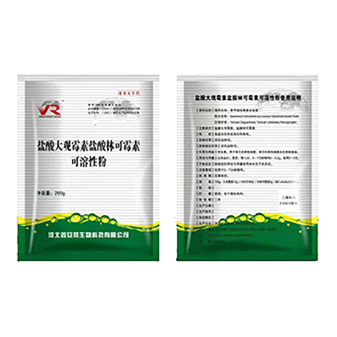- Afrikaans
- Albanian
- Amharic
- Arabic
- Armenian
- Azerbaijani
- Basque
- Belarusian
- Bengali
- Bosnian
- Bulgarian
- Catalan
- Cebuano
- Corsican
- Croatian
- Czech
- Danish
- Dutch
- English
- Esperanto
- Estonian
- Finnish
- French
- Frisian
- Galician
- Georgian
- German
- Greek
- Gujarati
- Haitian Creole
- hausa
- hawaiian
- Hebrew
- Hindi
- Miao
- Hungarian
- Icelandic
- igbo
- Indonesian
- irish
- Italian
- Japanese
- Javanese
- Kannada
- kazakh
- Khmer
- Rwandese
- Korean
- Kurdish
- Kyrgyz
- Lao
- Latin
- Latvian
- Lithuanian
- Luxembourgish
- Macedonian
- Malgashi
- Malay
- Malayalam
- Maltese
- Maori
- Marathi
- Mongolian
- Myanmar
- Nepali
- Norwegian
- Norwegian
- Occitan
- Pashto
- Persian
- Polish
- Portuguese
- Punjabi
- Romanian
- Russian
- Samoan
- Scottish Gaelic
- Serbian
- Sesotho
- Shona
- Sindhi
- Sinhala
- Slovak
- Slovenian
- Somali
- Spanish
- Sundanese
- Swahili
- Swedish
- Tagalog
- Tajik
- Tamil
- Tatar
- Telugu
- Thai
- Turkish
- Turkmen
- Ukrainian
- Urdu
- Uighur
- Uzbek
- Vietnamese
- Welsh
- Bantu
- Yiddish
- Yoruba
- Zulu
સપ્ટેમ્બર . 28, 2024 23:53 Back to list
Injectable Amoxicillin-Clavulanate for Dogs Effective Treatment Options and Benefits
Amoxicillin-Clavulanic Acid Injectable for Dogs Understanding Its Uses and Benefits
Amoxicillin-clavulanic acid, often referred to as co-amoxiclav, is a widely utilized antibiotic in veterinary medicine, particularly for treating infections in dogs. This combination drug leverages the properties of amoxicillin, a penicillin derivative, alongside clavulanic acid, a beta-lactamase inhibitor, to enhance its effectiveness against a broad spectrum of bacterial infections.
Mechanism of Action
Amoxicillin works by inhibiting the synthesis of bacterial cell walls, which is critical for their survival and replication. However, some bacteria produce enzymes known as beta-lactamases that can deactivate amoxicillin, rendering it ineffective. Clavulanic acid steps in to combat this problem by inhibiting these enzymes, allowing amoxicillin to remain potent against a wider range of bacteria. This combination makes amoxicillin-clavulanic acid particularly effective against both gram-positive and gram-negative bacteria, including those that might otherwise resist treatment.
Indications for Use
Veterinarians prescribe injectable amoxicillin-clavulanic acid for various conditions in dogs, including but not limited to
1. Skin Infections Canine skin infections, often caused by bacteria like Staphylococcus, can be successfully treated with this antibiotic. These infections may present as redness, swelling, and pus-filled lesions.
2. Urinary Tract Infections (UTIs) UTIs are common in dogs, especially females, and can lead to serious health issues if left untreated. The injectable form of amoxicillin-clavulanic acid is effective in alleviating the infection and providing rapid relief.
amoxicilline acide clavulanique injectable chien

3. Respiratory Infections Dogs experiencing respiratory issues due to bacterial infections may be treated with this medication to help combat the infection quickly.
4. Dental Infections Periodontal disease and other dental infections can also be treated effectively with amoxicillin-clavulanic acid, helping to reduce bacteria and inflammation.
Administration and Dosage
Amoxicillin-clavulanic acid is typically administered via injection, providing a more immediate effect compared to oral formulations. The dosage varies based on the dog's weight, the severity of the infection, and the veterinarian's clinical judgment. It is essential for the veterinarian to assess the dog thoroughly to determine the appropriate dosage and treatment duration.
Side Effects and Precautions
While injectable amoxicillin-clavulanic acid is generally well tolerated, some dogs may experience side effects, including gastrointestinal upset, diarrhea, or allergic reactions. It’s crucial for pet owners to monitor their dogs after administration and report any concerning symptoms to their veterinarian promptly. Additionally, this medication should be used cautiously in dogs with a history of allergies to penicillins or those with severe liver or kidney disease.
Conclusion
Amoxicillin-clavulanic acid injectable for dogs represents a cornerstone of veterinary pharmacology, providing an effective treatment option for various bacterial infections. By combining the strengths of both amoxicillin and clavulanic acid, this medication offers a broader spectrum of activity, ensuring better outcomes for canine patients. As with any medication, responsible use under a veterinarian's guidance is essential to maximize benefits while minimizing risks, ensuring our furry companions receive the best possible care.
-
Guide to Oxytetracycline Injection
NewsMar.27,2025
-
Guide to Colistin Sulphate
NewsMar.27,2025
-
Gentamicin Sulfate: Uses, Price, And Key Information
NewsMar.27,2025
-
Enrofloxacin Injection: Uses, Price, And Supplier Information
NewsMar.27,2025
-
Dexamethasone Sodium Phosphate Injection: Uses, Price, And Key Information
NewsMar.27,2025
-
Albendazole Tablet: Uses, Dosage, Cost, And Key Information
NewsMar.27,2025













